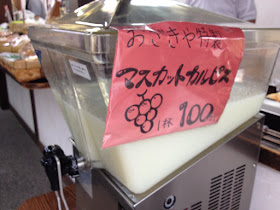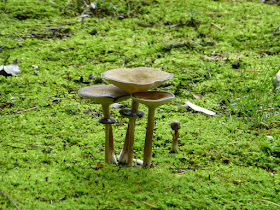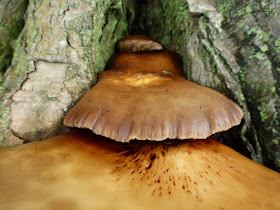Nestle seems to find a new Kit Kat flavor to toss out every few months, and I'm always there to give it a try.
I've seen but haven't tried a new baked Kit Kat flavor. I did get my hands on the mint-flavored Kit Kats, Worth every penny.
But this is Japan, so Nestle can do better. How about kinako?
Kinako is a roasted soybean flour used in a bunch of Japanese recipes, most notably sprinkled on top of dango. Take a look at my post on Okayama's kibi dango snack to see it in use. And the mild, distinct flavor has been ported over to a Kit Kat snack.These aren't the usual long bars, though. Kit Kat sells little balls of awesomeness that still seem to have the wafers inside. The chocolate on the balls doesn't seem to melt as quickly as the bars, making them easier to eat. The mint Kit Kats I had were sold as balls, too. I like this flavor, but unlike the mint candies, I won't be buying multiple bags.
Next up are a couple more flavored Kit Kats. Thankfully, Kit Kat has started selling smaller gift boxes to go along with the full-sized ones, for those of us who are interested in trying but not buying a full box.
The orange pack has a citrus blend, with what looks to be lime, lemon, and orange. The purple one is sweet potato, a common snack in Japan during cooler months.
The citrus flavor was really good. As you might expect, orange was the dominant flavor, but lemon came through as well.
The sweet potato is a milder flavor. It really didn't stand out at all, which didn't make it bad, but certainly wasn't good, either.
While we're talking about sweets, another snack I've seen recently is Baskin Robbins chocolates. These are birthday cake ice cream-flavored, with Pop Rocks-like candies inside to fizz on your tongue.
You can see the candy and an inside view above. Technically, the flavor seems to be "Cool Popping Shower" and it lives up to that expectation fully. I really enjoyed these very sweet candies, individually wrapped to help them last a little longer. Just writing about them again makes me want to go get some ice cream!
I've mentioned before that students will occasionally bring gifts for various reasons. This little rabbit on a piece of chocolate was really cute!
Finally, back to the processed sugars. I feel like I posted about this before, but Jelly Belly sold a cherry blossom flavored candy here this spring. Sakura flavor is really just a mild cherry flavor, and these were pretty good too. Then again, I always like Jelly Belly candies.































































































